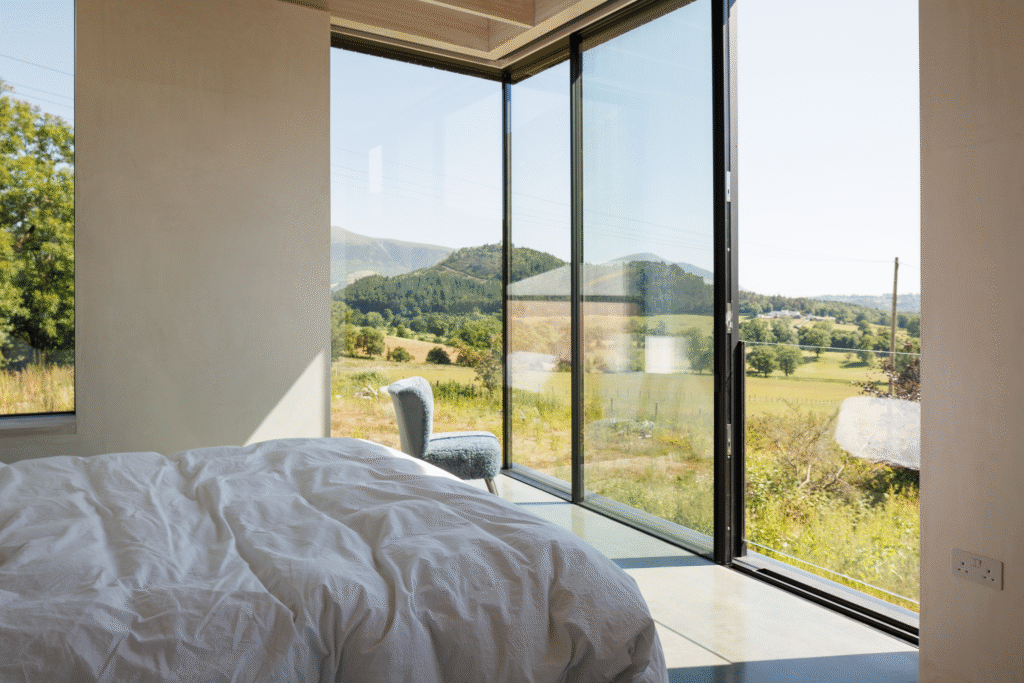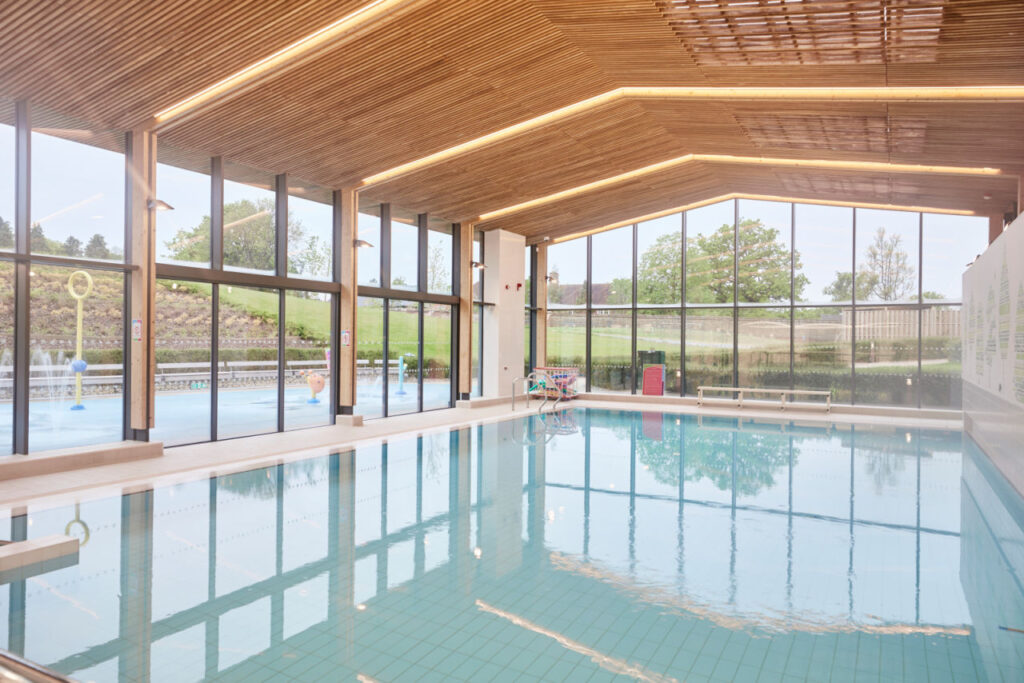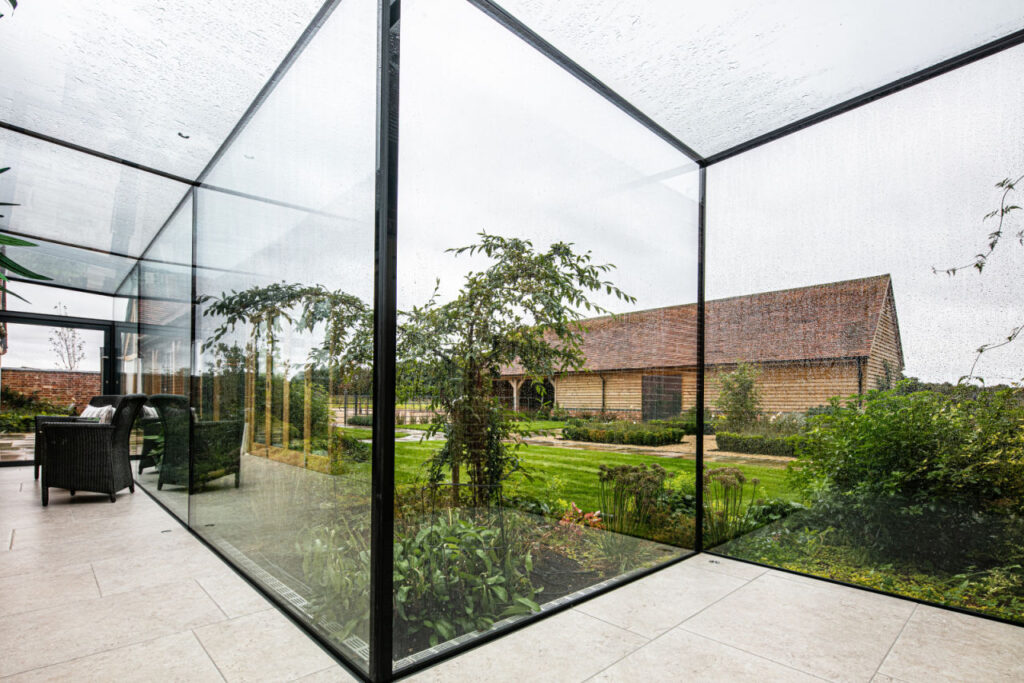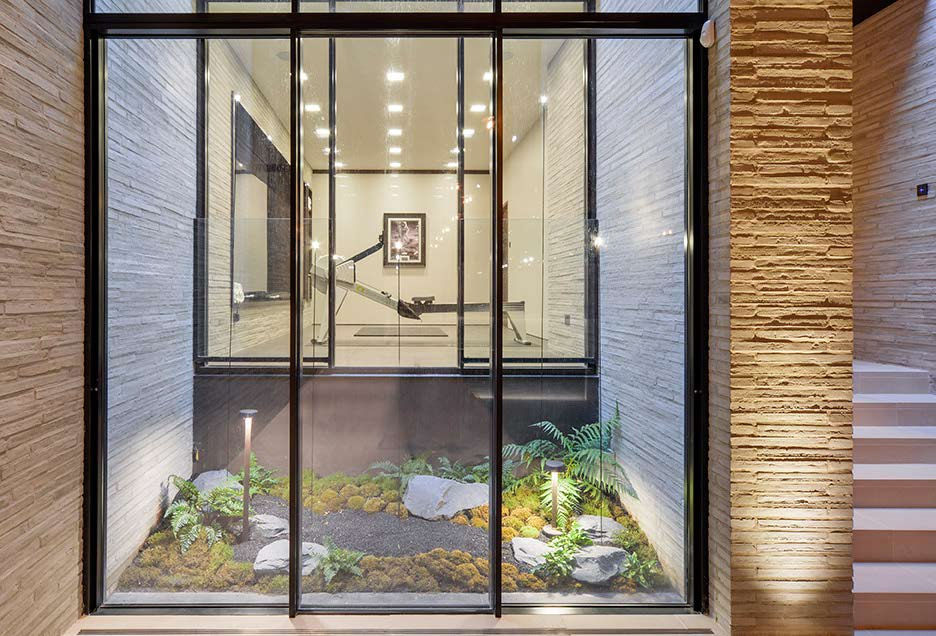Do Triple Glazed Windows Reduce Noise? Everything You Need To Know.
You’ve probably heard of triple glazing, most likely in hushed, admiring tones when discussing renovation projects or new build homes. But what exactly is it, and is it a worthy investment for your property?

In the UK we are so accustomed to double glazing being the absolute gold standard, but with an ever-increasing focus on energy consumption, efficiency and sustainable building practices, a third pane of glass is stepping up as a valid contender.
We’ve put together this guide to help demystify triple glazing, to answer your burning questions for triple vs double glazing, and to help you decide if it is the right choice for your own project. Let’s get started.
What is triple glazing?
Let’s start with the basics. What is triple glazing? In short, triple glazing is exactly what it sounds like: it is a window unit with three panes of glass instead of the usual two.
These panes are separated by two hermetically sealed cavities, which are then typically filled with an inert insulating gas, such as argon or krypton. By doing so, it creates a highly effective thermal barrier.
The concept is a simple one: more layers means more insulation. By adding this additional pane, and the accompanying second gas-filled cavity, the result is a significantly reduced amount of heat transfer. What this looks like for the homeowner is a warmer room in the winter and a cooler room in the summer, especially when combined with solar control coating. There is also less chance for condensation to form, as it is not just one pane of glass feeling the difference between the inside and outside world.

Do triple glazed windows reduce noise - when compared to acoustic glass?
Another reason why people may opt for triple glazed windows is for the acoustic help that they offer. Do triple glazed windows reduce noise? The answer is a resounding yes. But there are caveats to take into account. The three panes of glass and two gas filled cavities naturally serve as an excellent sound buffer, significantly dampening external sounds, making them prime options for properties located near busy roads, schools, on high streets or near airports.
However, if your primary concern is noise reduction above all else -such as thermal performance-, then you should probably consider going with specialist acoustic glass instead. While triple glazing can reduce sound merely because the barrier is thicker, acoustic glass is specifically engineered with a laminated layer (often a PVB interlayer) that purposefully absorbs sound vibrations, making it vastly superior at tackling certain noise frequencies. For a tranquil haven with little noise pollution, then triple glazing can provide you with a good balance of thermal and acoustic performance, but for more extreme noise problems, acoustic glass is the more powerful, and better suited, solution.
Triple vs double glazing
If double glazing has been working so well, why are we even considering triple glazing? The core difference between the two has been rising in popularity due to the changes in building regulations, where glass needs to perform better than ever in contribution to the thermal capabilities of a building. And triple glazing outperforms double glazing in this.
Double glazing typically has a U-value (a measure of heat loss) of around 1.2 W/m²K, which is a significant improvement on single glazing. However, a high-performance triple glazed unit can achieve a U-value as low as 0.8 W/m²K or even less. This superior thermal efficiency means a more comfortable living environment, fewer draughts, and, importantly, a reduced reliance on your heating system, especially if it uses traditional fuel methods. Some people also opt for triple glazing as part of their strategy for achieving net zero, or Passiv Haus accreditation.
When considering a new glass installation, it really helps to understand all aspects of the triple vs double glazing debate, not just the thermal benefits. Triple glazing can be bulky, heavy and expensive, so may not be suitable for every application. However, the cost payback may be worth it over time, in the form of reduced heating bills and enhanced comfort.

The sustainability benefits
The world of house building is changing, and energy consumption and carbon footprints are the new currency. Triple glazing offers up a compelling solution for both. The superior thermal performance means less energy to keep your home at an ambient temperature -regardless of the season- which will save both your budget and the planet as it will mean less reliance on fossil fuels, thus lowering your carbon footprint and contributing to a greener future for everyone.
The glass component of future residential construction projects are absolutely key, with many options being considered or innovated to help pave the way to more sustainable industry practices. The standard of glazing is set to soar in the coming years, nudged into action by new regulations, but adopted and stepped up by the consumers who are asking for sustainable homes that are both comfortable and environmentally friendly.
A worthy investment? What projects will and won't work with triple glazing
So, is triple glazing worth it? We aren’t going to pretend that triple glazed units are not expensive. In fact, it is the cost of them that is the reason why many people opt for double glazing instead. We do, however, want to press how they can be an ideal solution to some particular projects.
For new builds that are being specially designed to meet ultra-low energy standards -such as Passivhaus- then triple glazing is often an absolutely essential component. These projects are built upon the principle of maximum possible thermal efficiency, and triple glazing is a fundamental part of achieving the required performance.
For large-scale home renovations, it may be worth considering triple glazing as a worthy investment for the future, especially if this is going to be your Forever Home. The up-front cost will be higher, but the energy savings, comfort and potential changes to thermal efficiency regulations over the years may offset the costs over the decades. It is a particularly sensible choice for largely glazed areas, such as a floor to ceiling window or structurally glazed extensions, where heat loss may otherwise be a significant concern.
Before making your decision, it is important to note that not all triple glazing is the same, and there is no one-size-fits-all approach. By their oversized nature, these units are heavy, due to the greater triple glazed window thickness, rendering them unsuitable for some older properties or weaker frames. In particular, listed buildings may not be able to accommodate the heavier, thicker frames needed, and planning permission for such may prohibit alterations to the original windows anyway. In such circumstances, we would recommend high performance double glazing, or even secondary glazing, to offer a more sympathetic option.
A high-performance triple glazed unit can achieve a U-value as low as 0.8 W/m²K or even less.

A closer look at the specifics
As mentioned above, the triple glazed window thickness is a critical factor in any project. But how thick are we talking? Standard units can vary, but a typical triple glazed unit is around 40-54mm thick, including the glass panes and the two air gaps.
Compared to a typical double-glazed unit of around 28mm, and you can see why this may be an issue. All of this extra bulk needs to be considered by your architect and structural engineer, as the window frames must be able to securely hold the additional weight. High-end systems, such as the outstanding Sky Frame 3 can offer extremely thin sightlines despite this added thickness, blending the best of thermal performance with a sleek, minimalist aesthetic.
Cantifix and triple glazing
Cantifix have long been at the forefront of high-performance architectural glazing. Having used triple glazing on a variety of ambitious projects, we understand its technical capabilities and, more importantly, its sensible application. Our expertise allows us to specify the use of systems like Sky-Frame 3, which we consider an ideal triple glazing option. This system beautifully combines minimal sightlines with the highest thermal and acoustic performance. Its robust design, which features a 54mm thick unit, allows for a vast range of applications, from stunning floor-to-ceiling glass to ultra-wide sliding doors, all without compromising on the sleek, frameless effect.
It can be seen to great effect in the extraordinary Lake District House by Mary Arnold Forster. This beautiful family home is situated in both a national park and a world heritage site and as such the brief was to create a modern building that did not detract from its amazing surroundings. We used triple glazed, low iron glass to allow both for uninterrupted views and unparalleled thermal comfort.

FAQs
Q: Can I install triple glazing in my existing double-glazed frames?
A: In most cases, it is not possible to simply replace a double glazed unit with a triple-glazed one. Triple glazing is significantly thicker and heavier, and most existing double-glazed frames are not designed to support the extra weight and thickness. A professional assessment is required to determine if any upgrades are feasible, but most likely, new frames will be needed.
Q: How much does triple glazing cost in the UK?
A: The cost of triple glazing varies significantly based on the size, material, and type of window. On average, you can expect to pay between 10-20% more than a high-quality double-glazed unit. The typical cost for a single window is around £1,200, but a quote from a professional glazier is always the best way to get an accurate price.
Q: Is triple glazing worth it for my home?
A: It is a worthy investment for projects where maximum energy efficiency is a priority, such as new builds aiming for a Passivhaus standard. For most UK homes, modern double glazing already provides excellent performance. However, if you are looking for the very best in thermal and acoustic insulation, or if you have a large glazed area, triple glazing is a top-tier solution that pays off in comfort and long-term energy savings.
Q: What is the R-value of triple-glazed windows?
A: The R-value measures resistance to heat flow (a higher number means better insulation). High-performance triple-glazed windows can achieve R-values of 7-8 or higher, which is significantly better than a typical double-glazed window with an R-value of around 3-4.
Hopefully we have been able to answer the most important questions, such as Do triple glazed windows reduce noise? And whether they are a contender in the triple vs double glazing debate. The rise of triple glazed windows is more than a mere passing trend, it is one of the most effective ways to future proof your home with superior thermal performance. With the added benefits of noise reduction and your sustainability credentials. While it may be a significant investment, with the right guidance from a glazing professional, there is no reason why they cannot work for you, and pay for themselves in the long run.
Are you ready to discuss triple glazing for your home?
For homeowners, property developers or architects looking to create a haven that is as efficient as it is aesthetically pleasing, triple glazing is the clear winner, and we cannot wait to help you achieve the perfect glass solution for your project. Get in touch to begin the journey.
photos by Neil Kenyon




